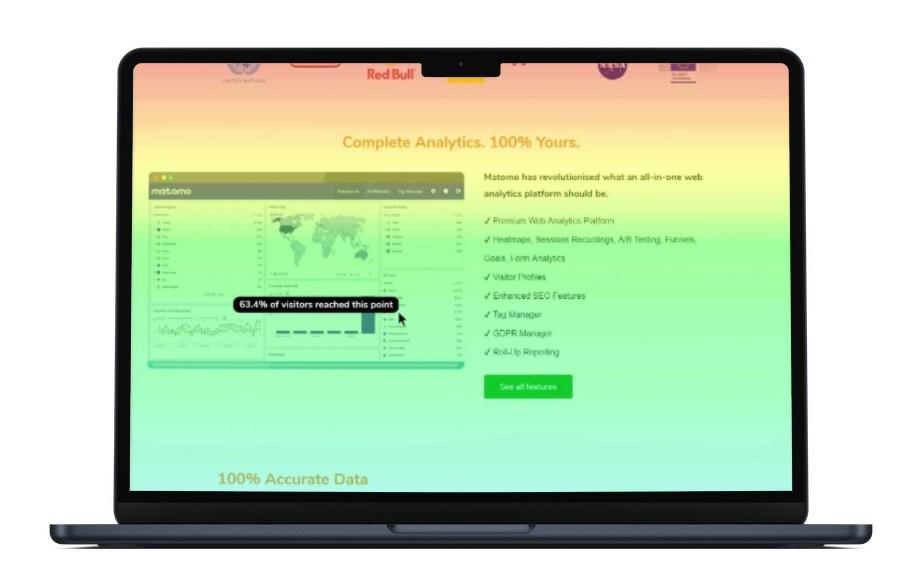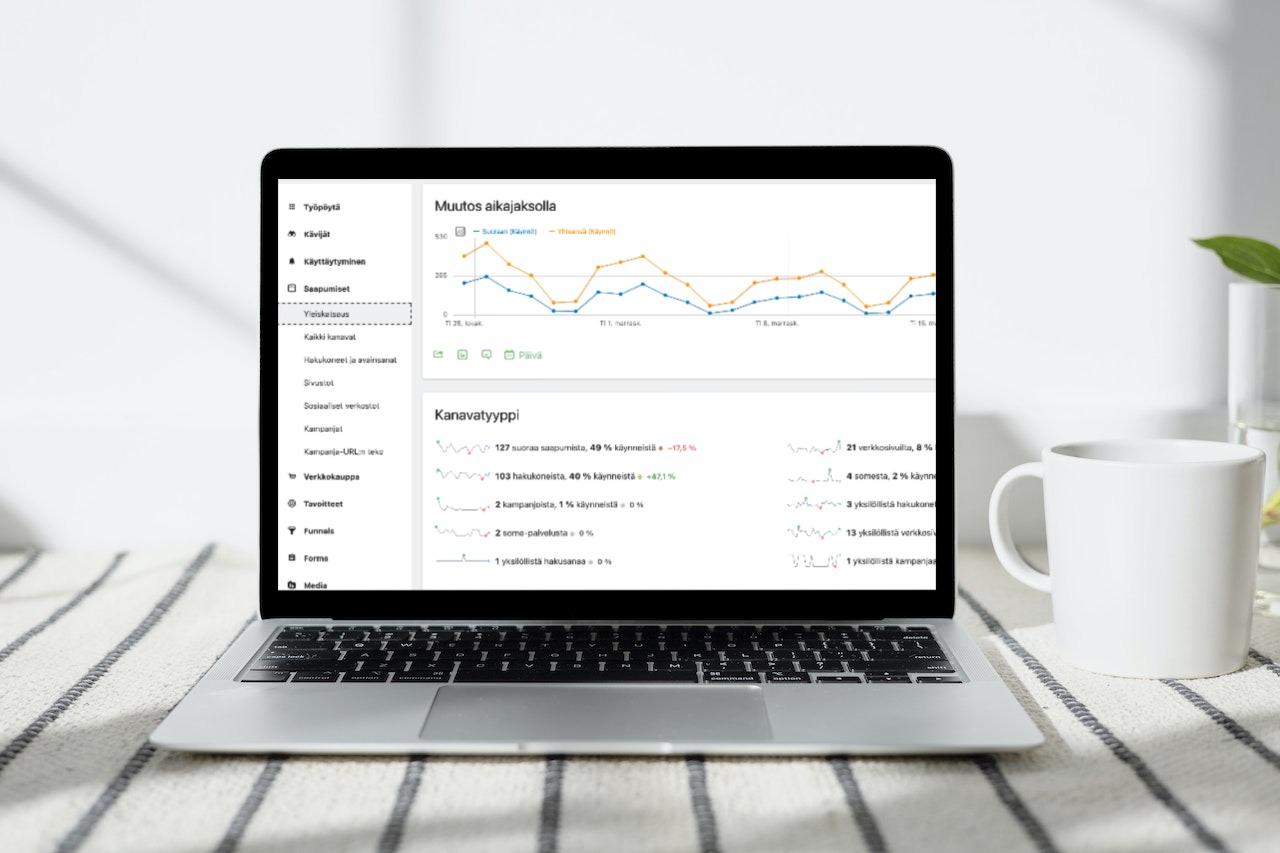Matomo Analytics does many things better than Google Analytics

If you’re a professional working with web analytics, you’re likely already familiar with Matomo Analytics . However, if you’re exploring alternatives to Google Analytics out of general interest, you’re in the right place. In this text, we will cover what Matomo is and why it is particularly sought after in Europe right now.
Matomo Analytics is a comprehensive analytics tool for various web services.
While data privacy and GDPR-related features make Matomo particularly interesting, we’ll delve into those aspects a bit later. First, let’s explore the tool’s versatility.
Matomo offers extensive basic metrics such as visitor statistics, engagement, popular pages, and traffic sources. Beyond these, it also provides the ability to analyse aspects that Google Analytics does not directly offer, often requiring customised tracking or third-party tools, which are frequently paid services.
Among the most intriguing features are visitor profiles and conversion optimization tools like heatmaps, visitor session recordings, and A/B testing. These conversion rate optimization (CRO) tools typically necessitate third-party paid services (e.g., Hotjar , Crazy Egg ) or sharing data with Microsoft (e.g., Clarity ). Matomo also includes an eCommerce component for online stores.

Matomo visitor profiles help understand your website users
Visitor profiles are a genuinely unique and intriguing feature of Matomo. They help in understanding the individual behaviour of visitors by summarising and listing their visits—completely anonymously. With the information available in visitor profiles, you can aim to better understand:
- Why did your visitors view your website?
- What interests a visitor when they return to your site?
- What are visitors looking for, and did they find what they were seeking?
It’s important to note that these features are most beneficial with Matomo’s cookie-based solution. For more on this topic, see the section on cookie-free Matomo.
Matomo is a privace-focused solution for the public sector
For many years, Google Analytics has been synonymous with web analytics. This is somewhat understandable, as there have been few real alternatives, and few have been willing to pay for something they can get for free from Google. However, data always has value, making “free” relative.
Matomo Analytics is a strong alternative, especially for organisations that prioritise keeping data within the EU. In fact, it’s a suitable option for anyone committed to data security and privacy. This often includes public sector entities, particularly government agencies.
Globally, Matomo is trusted by organisations such as the European Commission, NASA, the United Nations, and the European Digital Rights Centre. According to Matomo, the service operates on over a million sites across more than 190 countries.
Collected analytics data remains under your ownership within Europe
In recent years, a significant step towards a shift in web analytics began when the Austrian data protection authority ruled in January 2022 that Google Analytics violated the EU General Data Protection Regulation (GDPR) . Shortly after, France also declared that transferring data from Europe to the United States is contrary to GDPR , essentially making it illegal. However, Google’s tools themselves were not declared illegal.
It is no surprise that Google has since rushed to transition from the third-generation Universal Analytics tool to the fourth-generation GA4 analytics. While this move aims to address some tracking issues, the fundamental question remains – Does data move from Europe to the United States?
With Google, data does indeed cross continents.
This is where Matomo Analytics comes into play.
Matomo ensures that data is 100% owned by the organisation collecting it, with no external parties having access. The data for Matomo Analytics Cloud version is stored within Europe, primarily on servers and databases located in Frankfurt, with backups maintained in Dublin. Additionally, Matomo can be installed on your own servers, giving you complete control over your data.
Matomo can utilise data collected by Google Analytics
When transitioning web analytics from Google Analytics to Matomo, Matomo will initially start collecting data from the moment of implementation. However, it is possible to migrate data from Google Analytics to Matomo, allowing you to use historical data for comparison moving forward.
It is generally advisable to leverage historical data for a smoother transition. This is done by integrating Matomo with Google API Console. Once the data is transferred, the connection between the services can be removed.
If you decide to make the switch from Google to Matomo, it is important to allocate sufficient time for planning and executing the migration.
Cookie-free analytics is possible – under certain conditions
An intriguing feature of Matomo is its ability to operate without using cookies. This can lead to reliable analytics on website visitors and their interactions without the need for cookie consent notices, which some users find annoying. However, whether Matomo’s cookie-free solution is sufficient to avoid cookie consent requirements remains somewhat ambiguous in Finland.
Traficom’s autumn 2021 cookie guidelines state that: “Although this guide primarily addresses cookies, it should be understood that there are other technologies that function similarly to cookies.” For instance, user devices can also be identified using so-called fingerprinting techniques.
Matomo, however, has developed its own method for collecting data without cookies, which appears to be allowed without cookie consent – at least according to the French data protection authority (CNIL ), which has approved tracking without cookie consent. Matomo explicitly distances itself from fingerprinting as it might be considered against GDPR regulations.
Matomo explains the situation as follows: Thanks to Matomo’s use of industry-leading measures to protect user privacy, France’s data protection agency has confirmed that Matomo is exempt from tracking consent in France . Matomo doesn’t use fingerprinting to track visitors as it’s not considered as privacy-friendly as people think, and may be against GDPR regulations. Instead, it uses visitor config_id – a randomly-seeded, privacy-enabled, time-limited hash of a limited set of the visitor’s settings and attributes. The config_id or config hash is a string calculated for a visitor based on their operating system, browser, browser plugins, IP address and browser language.
As far as we know, Traficom has not yet addressed the issue of consent specifically for such tracking methods, so there remains some interpretative leeway.
Matomo’s cookie-free tracking does require that certain features, such as heatmaps, session recordings, or visitor profiles, cannot be utilised. However, it still provides a substantial amount of useful data, and cookie-free tracking can often be a sufficient solution.

What does Matomo Analytics cost?
Google Analytics is free for users, but this comes with its own costs. The data collected is used to serve Google’s advertising platform, which has significant value in itself. Since Matomo’s data is not used for global advertising purposes, it has its own separate pricing.
The cost for Matomo Analytics Cloud starts at €19 per month. This price covers up to 50,000 “hits.” A “hit” can refer to various types of interactions, such as a page view, file download, outbound click, internal site search, or any other event defined for tracking.
For those transitioning from Google Analytics, a helpful feature is that you can check the number of hits used in the Analytics Admin panel to assess your future needs.
On average, one visitor generates about three “hits,” meaning that 10,000 visitors per month would result in approximately 30,000 hits. However, the actual number of hits can vary significantly depending on the specifics of the website.
Matomo Analytics Cloud pricing
- 50 000 hits – €19/month
- 100 000 hits – €35/month
- 300 000 hits – €69/month
- 600 000 hits – €109/month
- 1 000 000 hits – €159/month
- 2 000 000 hits – €309/month
- 5 000 000 hits – €790/month
- 10 000 000 hits – €1490/month
The pricing is scalable, allowing flexibility if you’re unsure about your exact needs. You can start with a lower plan and upgrade as needed. If you exceed the allocated hits for your plan, the additional hits are charged at a rate that aligns with the next tier’s pricing. For example, if you exceed the 50,000 hits plan, additional hits are priced at €1.90 per 5,000 hits, which is consistent with the cost structure of the lower-tier package.
Matomo implementation
Matomo Analytics Cloud can be implemented on a tight schedule. The default report templates are sufficient for most purposes, and we work with the client to customize a dashboard that makes tracking the most important metrics easy.
We are happy to assist in every aspect of the Matomo Cloud solution implementation. Typically, this includes the following steps:
- Reviewing target audiences, goals, and metrics with the client.
- Implementation of Matomo Analytics Cloud.
- Data import from Google Analytics (if necessary).
- Adding Matomo tracking codes to the website.
- Customization of tracking and metrics.
- Reporting and utilizing data for business and website development.
